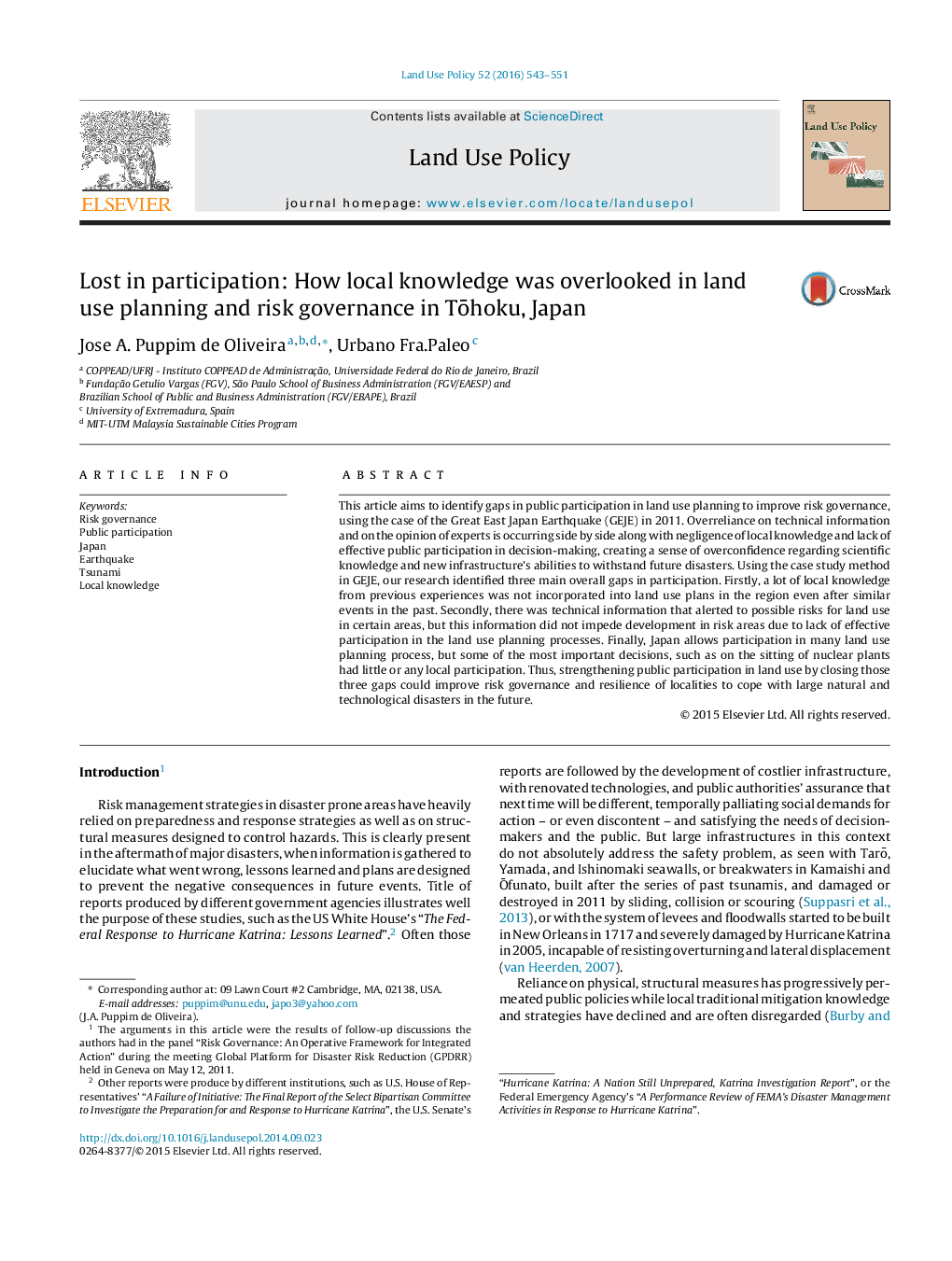| Article ID | Journal | Published Year | Pages | File Type |
|---|---|---|---|---|
| 6547538 | Land Use Policy | 2016 | 9 Pages |
Abstract
This article aims to identify gaps in public participation in land use planning to improve risk governance, using the case of the Great East Japan Earthquake (GEJE) in 2011. Overreliance on technical information and on the opinion of experts is occurring side by side along with negligence of local knowledge and lack of effective public participation in decision-making, creating a sense of overconfidence regarding scientific knowledge and new infrastructure's abilities to withstand future disasters. Using the case study method in GEJE, our research identified three main overall gaps in participation. Firstly, a lot of local knowledge from previous experiences was not incorporated into land use plans in the region even after similar events in the past. Secondly, there was technical information that alerted to possible risks for land use in certain areas, but this information did not impede development in risk areas due to lack of effective participation in the land use planning processes. Finally, Japan allows participation in many land use planning process, but some of the most important decisions, such as on the sitting of nuclear plants had little or any local participation. Thus, strengthening public participation in land use by closing those three gaps could improve risk governance and resilience of localities to cope with large natural and technological disasters in the future.
Related Topics
Life Sciences
Agricultural and Biological Sciences
Forestry
Authors
Jose A. Puppim de Oliveira, Urbano Fra.Paleo,
